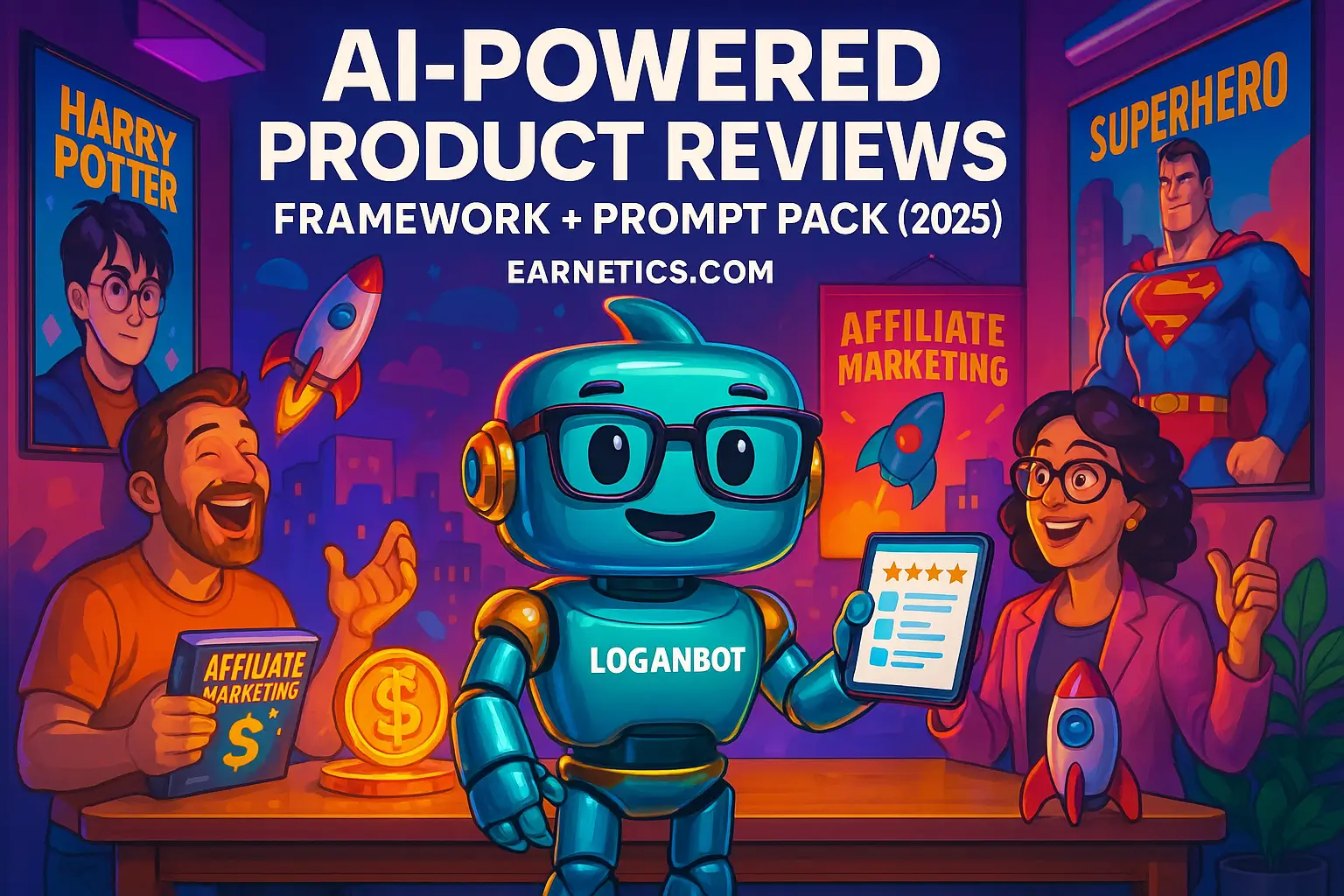AI-powered product reviews in 2025: the framework that actually makes readers buy (and trust)
Introduction
AI-powered product reviews turned from gimmick to must-have in 2025, but you still need a solid framework to avoid trash output and win search traffic.
I’ve spent the last few years building review systems that mix multi-modal models, human editors, and repeatable benchmarks, and I learned the hard way that AI alone won’t cut it. The promise is huge – faster coverage, consistent tone, and scale that would make a magazine jealous – but the pitfalls are real: hallucinations, shallow writeups, and SEO penalties if you fake expertise. 2025 is the turning point because models now read images, watch clips, and we finally have tooling and regulation that push teams to be honest by design.
This guide is for publishers, ecommerce teams, product marketers, reviewers, and AI builders who want a practical, no-bs playbook. I’ll give you a tested framework for robust reviews, an evaluation rubric you can copy, and a prompt pack you can drop into your stack. You’ll also get implementation checklists so you don’t launch a thousand reviews that smell like they were written by a bored bot.
Here’s what you’ll get from this article: a repeatable structure that ranks for both transactional and informational queries, a way to convert readers into testers and buyers, and operational tips to keep humans in the loop where it matters. I’ll also show how to combine specs, hands-on data, and multi-modal evidence so your content is useful and defensible.
Quick keyword map for SEO strategy:
1. Primary keyword: AI-powered product reviews
2. Secondary keywords: product review framework, AI review prompts, multi-modal product review, automated product reviews, review scoring rubric, review SEO best practices
3. LSI terms: review schema, aggregateRating, hands-on testing, visual evidence, reproducible benchmarks, human-in-the-loop, prompt engineering, hallucination detection
AI product review framework
Core components
When I build an AI review, I start with a checklist so nothing vital gets skipped. A robust review must include: specs (clear, normalized), hands-on observations (what I actually used), performance benchmarks (repeatable numbers), pros and cons (short and skimmable), and real use-cases (who should buy this and why).
I structure sections to work for readers and search engines: quick TL;DR, key specs table, performance highlights, in-depth hands-on, comparison squeeze, final score, and FAQ. That order gets people fast answers and keeps crawlers happy because it mirrors search intent – quick snippet answers then deeper content.
Practical lesson: always lead with the problem the product solves. Readers search by need – “best earbuds for commuting” – not by model number. Frame the review around intent, then drop specs and tests as proof.
Scoring rubric & weighting
I use transparent scoring so readers can audit the outcome. Define criteria, assign weights, and normalize the results. Typical criteria: Performance 30%, Battery 20%, Build/Design 15%, Value 20%, Software/Support 15%. Weights vary by category – headphones need comfort higher, routers care about throughput more.
Two common systems I use: a simple 5-point scale for editorial sites that want clarity, and a 100-point score for technical audiences who like granularity. Example: 5-point scale maps to ranges: 4.5-5 = Excellent, 3-4 = Good, etc. A 100-point system is useful when you combine multiple benchmark numbers and want to show subtle differences between models.
Actionable tip: always publish the raw rubric and the sub-scores. That transparency reduces complaints and builds trust, especially if your model generated the draft.
Multi-modal evidence
In 2025, reviews without images or short clips feel lazy. I integrate photos, annotated screenshots, 10-second performance clips, and CSV data tables. The AI models can reference and describe images, but I still validate visual claims against source files to avoid hallucinations.
Prompt guideline I use: ask the model to describe specific pixels and timestamps, not “summarize the video.” For example, tell the model to list visible artifacts at 0:03 and compare them to a baseline clip. That forces evidence-linked commentary instead of airy assertions.
Mini takeaway: store visual assets with metadata – camera, exposure, timestamp, product serial – so you can trace any claim back to a file. Readers and regulators will thank you later.
Evaluation metrics for product reviews
Objective vs. subjective indicators
I separate objective metrics from subjective impressions and treat them differently in scoring. Objective metrics are measurable: battery life (hours), throughput (Mbps), latency (ms), noise levels (dB), and weight (grams). Subjective metrics are comfort, perceived build quality, and aesthetic appeal.
To balance both, I convert subjective impressions into standardized rubrics. For example, comfort uses a checklist – weight, ear seal, materials – and a short user panel score. Then I mix the panel average into the final score with a clear weight so readers know how much feelings influenced the outcome.
Practical step: always show the raw numbers beside subjective quotes. Numbers anchor opinions and keep your review from sounding like a hype piece.
Automated benchmarking & synthetic tests
Automation gives repeatability. I run automated suites and simulators to produce consistent metrics – audio loop tests for battery, scripted web loads for routers, synthetic photo charts for cameras. These tests produce CSVs you can feed back into prompts so the model can generate narrative commentary tied to numbers.
How I feed results: include a short data summary block in the prompt with labels, medians, and variance. Ask the model to reference the medians and highlight anomalies. That approach keeps comments accurate and reduces hallucinations.
Reliability, reproducibility & versioning
Build logs. I tag every test with model version, dataset, firmware version, and environment. If I rerun a test months later, I need to know what changed. I also store sample sizes and confidence intervals for panel tests so readers can judge reliability.
Pro tip: export evaluation artifacts to versioned buckets and include a link in the review. This is especially useful when a brand updates firmware and you need to show delta tests.
AI review prompt pack (2025)
Prompt templates — quick vs deep
Short templates are for rapid coverage: headline, TL;DR, 3 quick pros/cons, one-line score. Long templates are structured: system, context, instructions, examples, and strict output format (JSON or markdown table). I always include an examples section – showing the model the format avoids chaotic outputs.
Example structure I use in deep prompts: system sets tone and safety rules, context supplies specs and test CSV summaries, instructions define sections and desired word counts, examples show a tiny sample review, and output format requires labeled JSON for downstream parsing.
Mini-hook: keep a fast and a deep template per category – you’ll scale faster and maintain quality.
Reasoning styles & instruction design
Some prompts benefit from chain-of-thought or stepwise reasoning – for tricky tradeoff analysis or to surface uncertainty. For instance, ask the model to list pros and cons, then weigh them step-by-step before producing the final score. That reveals the reasoning and helps humans audit the conclusion.
When you want concise instruction-following, keep the prompt deterministic: precise bullet points, examples, and strict output schema. For uncertainty estimates, ask the model to produce a confidence score and cite the evidence lines that drove low confidence.
Tuning parameters & guardrails
In 2025, tuning matters. I usually run temperature near 0.2 for factual outputs and 0.6 for creative comparisons. Limit max tokens for short reviews and allow more for deep dives. Use few-shot examples to teach the model your voice and score mapping.
Guardrails I add: system messages forbidding invented specs, prompts that require CSV evidence for quantitative claims, and a hallucination detector prompt that asks the model to flag statements without linked evidence. If the model flags something, route the review to human QA.
Automated review workflow & tools
Data ingestion & product feeds
I pull data from manufacturer APIs, retailer catalogs, public specs, and user reviews. Normalize fields like model_id, SKU, battery_mAh, and release_date. If sources conflict, use a confidence score per source and prefer manufacturer specs for hardware numbers, but cross-check with our measurements.
Tip: create a source map so each spec in the final review links to its origin. That reduces disputes and speeds corrections when brands change claims.
Pipeline: generate → evaluate → human edit
My orchestration looks like this: generate draft with the model, run automated checks (schema, numbers, hallucination flags), auto-score via rubric, then send to human editors for acceptance. I put human-in-the-loop on any review with low confidence, new product categories, or high commercial intent pages.
Acceptance criteria include numeric consistency, no unsupported claims, and at least one human sign-off for top 10% pages. That balance keeps throughput high without sacrificing trust.
Tooling stack & orchestration
Recommended tools in 2025: multi-modal LLM providers, vector DBs for asset retrieval, eval frameworks like MLCommons or custom suites, CI pipelines for tests, and CMS connectors for automated publishing. Consider cost vs latency tradeoffs – cheaper models for drafts, expensive multi-modal models for final evidence checks.
Practical note: use orchestration platforms to manage retries and human queues. I rely on cloud functions for ingestion and a lightweight UI for editors to review flagged content quickly.
SEO & ethics for AI product reviews
SEO: schema, keywords & structured data
Technical SEO is non-negotiable. Implement Product and Review schema with aggregateRating and detailed review entries to win rich snippets. Include FAQ schema for common questions and use structured data to mark up your spec table so search engines can digest the facts.
Target keywords by intent: review, vs, best for, buying guide, and long-tail queries. Break pages by intent segments and use comparisons for transactional queries – those convert. Monitor SERP features and optimize meta snippets for answer boxes.
Transparency & trust signals
I always disclose AI assistance and publish methodology toggles so readers can see raw metrics, test conditions, and revision history. Show provenance badges with timestamps and model versions to signal maturity. Readers trust reviews that show their work – it’s human psychology.
UI patterns I like: methodology toggle, raw CSV downloads, firmware/version badges, and an “edit log” that documents when a claim changed. These cues reduce friction and increase conversions.
Bias mitigation & compliance risks
Detect bias by analyzing score distributions and checking for brand favoritism. Prevent sponsored slant with clear policies and separate editorial from commercial feeds. In 2025, regulators expect disclosure, so keep affiliate links labeled and maintain a policy for conflicts of interest.
For guidance on AI risk and governance, I follow frameworks like the NIST AI Risk Management Framework and adapt controls to reviews – log everything, test models for fairness, and keep humans accountable. See NIST for more on risk management: https://www.nist.gov/itl/ai.
Conclusion
I built this playbook so teams can scale credible, discoverable, and useful AI-powered product reviews without embarrassing themselves or getting sued. The core: a clear structure, a transparent rubric, multi-modal evidence, and prompt templates that force the model to cite data. When you combine that with logging, human QA, and smart SEO, you get reviews that convert and keep their integrity.
Your next steps are simple and ridiculous in their clarity: pick one product category, run a pilot with the short and deep prompts, instrument a rubric and logging, and measure CTR, SERP features, and reader feedback. Start small – a handful of reviews shipped well is worth more than a thousand shallow drafts.
KPIs to track: organic traffic, rich snippet wins, average time on page, conversion rate to affiliate or purchase, and review accuracy (rechecks vs claims). Do A/B tests: AI draft + human edit vs human-only review, and measure time to publish and conversion lift. Iterate on prompts and the rubric – small prompt tweaks can move scores and conversion.
Implementation checklist and resources I leave you with: prompt pack download, sample rubrics, schema snippets, and recommended tooling. Save the raw CSVs, tag model versions, and create a human QA gate for low-confidence reviews. This keeps automation honest and your brand intact.
Final note: automation is a tool, not a replacement for judgment. Balance speed with transparency and human oversight – that’s how you build long-term trust and SEO momentum. The future is not bots taking over, it’s humans using bots to scale better judgment.
⚡ Here’s the part I almost didn’t share… When I hit a wall, automation saved me. My hidden weapon is Make.com – and you get an exclusive 1-month Pro for free.
✨ Want the real secret? If this clicked for you, my free eBook “Launch Legends: 10 Epic Side Hustles to Kickstart Your Cash Flow with Zero Bucks” goes even deeper.
Explore more guides and tools to build your digital income empire on Earnetics.com.


